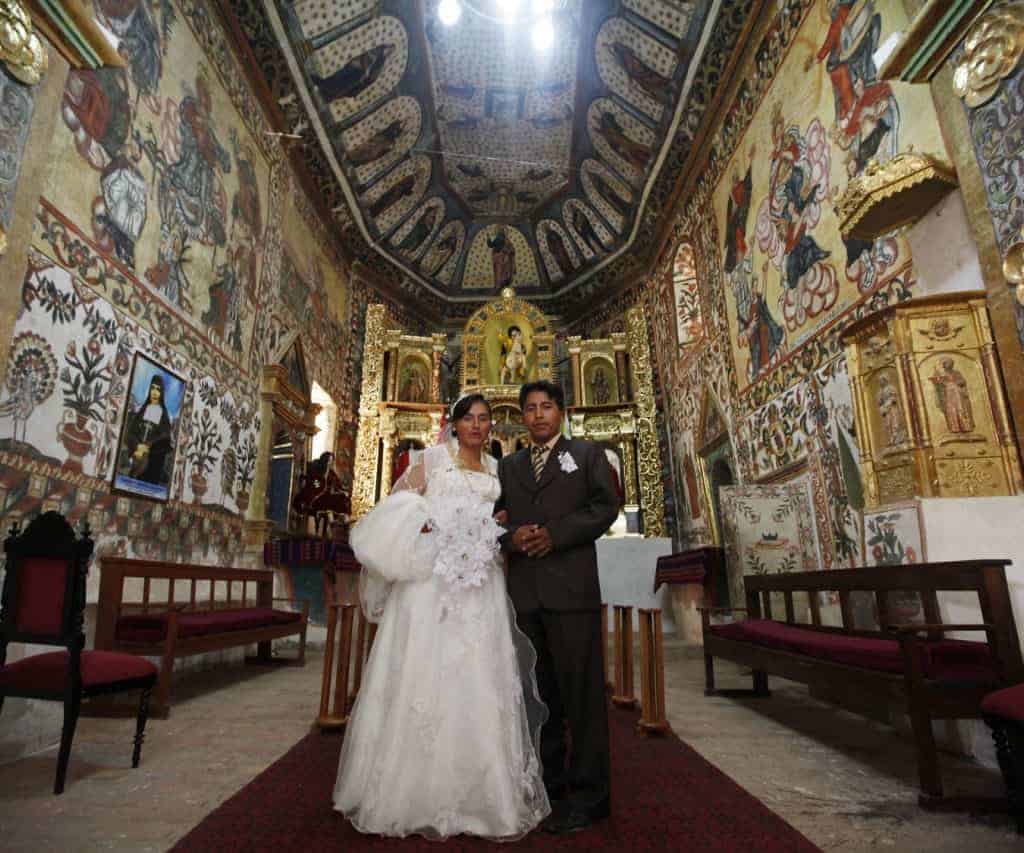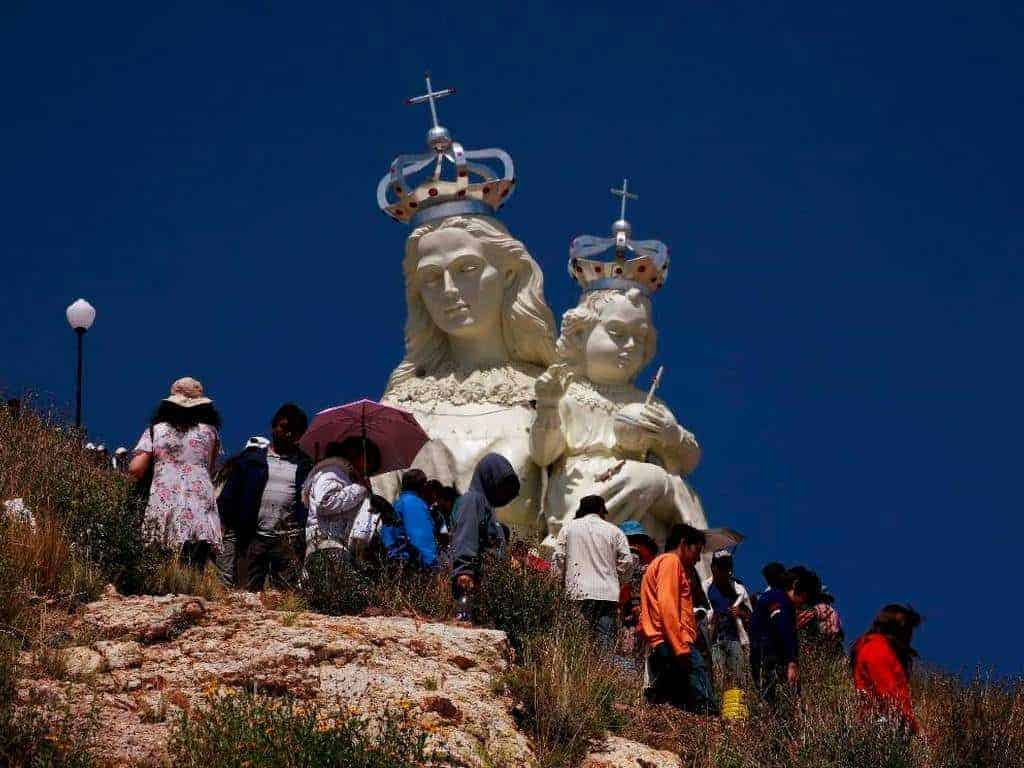In the heart of Bolivia’s highlands, specifically in the Aymara town of Curahuara de Carangas, stands an architectural masterpiece: The Andean Sistine Chapel. With over four centuries behind it, this edifice has endured the tests of time and the region’s challenging climate.
The Andean Sistine Chapel: A Jewel of Bolivia’s Cultural Heritage
Built in 1608, the chapel has borne witness to Bolivia’s evolving historical and cultural landscape.
Fashioned from adobe—a traditional method blending clay soil, sand and wild straw—this structure epitomizes the convergence of Indigenous and Spanish influences.
Its interior boasts striking murals, depicting biblical tales and saintly figures. During colonial times, these paintings played an instrumental role, serving as educational tools in evangelization.
Spanish missionaries harnessed these depictions to impart Catholic teachings upon locals, who, prior to colonization, practiced their own spiritual beliefs.
Yet, these frescoes aren’t just biblical. They also echo elements of Aymara cosmology, reflecting a melding of European and Andean worlds.
This cultural synthesis shines through how local artisans grasped and tailored biblical lessons, embedding symbols and traditions intrinsic to their culture.
The Renaissance of The Andean Sistine Chapel
Curahuara de Carangas Lures Global Visitors with Its Revived Artistic Heritage
Over time, wear and tear marred the chapel, with many murals showing the strain. Thankfully, restoration began in the late 20th century.
Art and conservation experts meticulously revived these age-old paintings, ensuring future generations could behold this priceless legacy. The transformation has been nothing short of remarkable.
Today, people worldwide journey to Curahuara de Carangas, captivated by the Andean Sistine Chapel’s grandeur. This restoration not only safeguards artistic and cultural treasures but has given a significant boost to local tourism.
The Festival of Tata Santiago
Faith and Tradition Converge at the Chapel of Curahuara de Carangas
The chapel’s seminal event is the celebration of Tata Santiago on July 25th. The town erupts in vibrant colors and melodies, with the chapel at the heart of all religious proceedings.
Pilgrims from across Bolivia and neighboring nations flock to Curahuara de Carangas, paying homage to Tata Santiago and partaking in various sacred ceremonies. It’s a tangible testament to the unwavering faith and devotion still prevalent in this Andean community.
The Andean Sistine Chapel
Bolivia’s Global Cultural and Heritage Gem
The Andean Sistine Chapel’s historical, artistic and cultural significance has garnered accolades from various institutions. For instance, Bolivia’s Catholic University has exclusively featured the chapel, delving into its aesthetic richness and its role in Bolivia’s history.
Local and global organizations are striving for its worldwide recognition. The potential for tourism is unmistakable. Local authorities, in conjunction with the Tourism Ministry, are formulating strategies to showcase the region and entice a broader audience.
In conclusion, the Andean Sistine Chapel of Curahuara de Carangas is more than an architectural feat. It stands as a living testament to cultural amalgamation, a community’s resilience and art’s timeless and boundless power. Without a doubt, it is among Bolivia’s—and the world’s—most cherished treasures.


